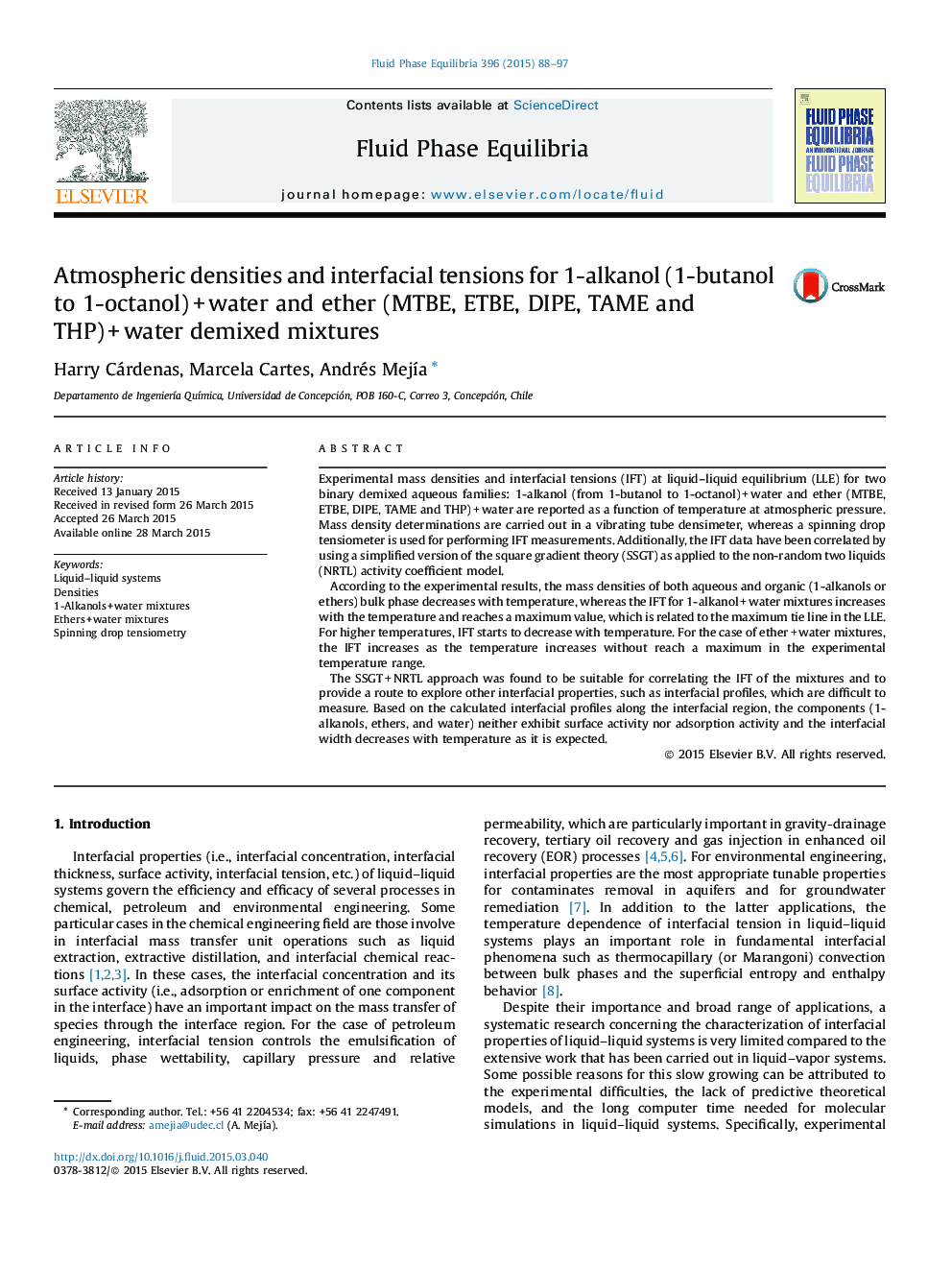| Article ID | Journal | Published Year | Pages | File Type |
|---|---|---|---|---|
| 201568 | Fluid Phase Equilibria | 2015 | 10 Pages |
•Interfacial tension in liquid–liquid equilibria.•Densities and interfacial tension for 1-alkanol + water mixtures.•Densities and interfacial tension for ethers + water mixtures.•Simplified square gradient theory for liquid–liquid mixtures.•Correlation of interfacial tension for binary demixed aqueous systems.
Experimental mass densities and interfacial tensions (IFT) at liquid–liquid equilibrium (LLE) for two binary demixed aqueous families: 1-alkanol (from 1-butanol to 1-octanol) + water and ether (MTBE, ETBE, DIPE, TAME and THP) + water are reported as a function of temperature at atmospheric pressure. Mass density determinations are carried out in a vibrating tube densimeter, whereas a spinning drop tensiometer is used for performing IFT measurements. Additionally, the IFT data have been correlated by using a simplified version of the square gradient theory (SSGT) as applied to the non-random two liquids (NRTL) activity coefficient model.According to the experimental results, the mass densities of both aqueous and organic (1-alkanols or ethers) bulk phase decreases with temperature, whereas the IFT for 1-alkanol + water mixtures increases with the temperature and reaches a maximum value, which is related to the maximum tie line in the LLE. For higher temperatures, IFT starts to decrease with temperature. For the case of ether + water mixtures, the IFT increases as the temperature increases without reach a maximum in the experimental temperature range.The SSGT + NRTL approach was found to be suitable for correlating the IFT of the mixtures and to provide a route to explore other interfacial properties, such as interfacial profiles, which are difficult to measure. Based on the calculated interfacial profiles along the interfacial region, the components (1-alkanols, ethers, and water) neither exhibit surface activity nor adsorption activity and the interfacial width decreases with temperature as it is expected.
Graphical abstractFigure optionsDownload full-size imageDownload as PowerPoint slide
